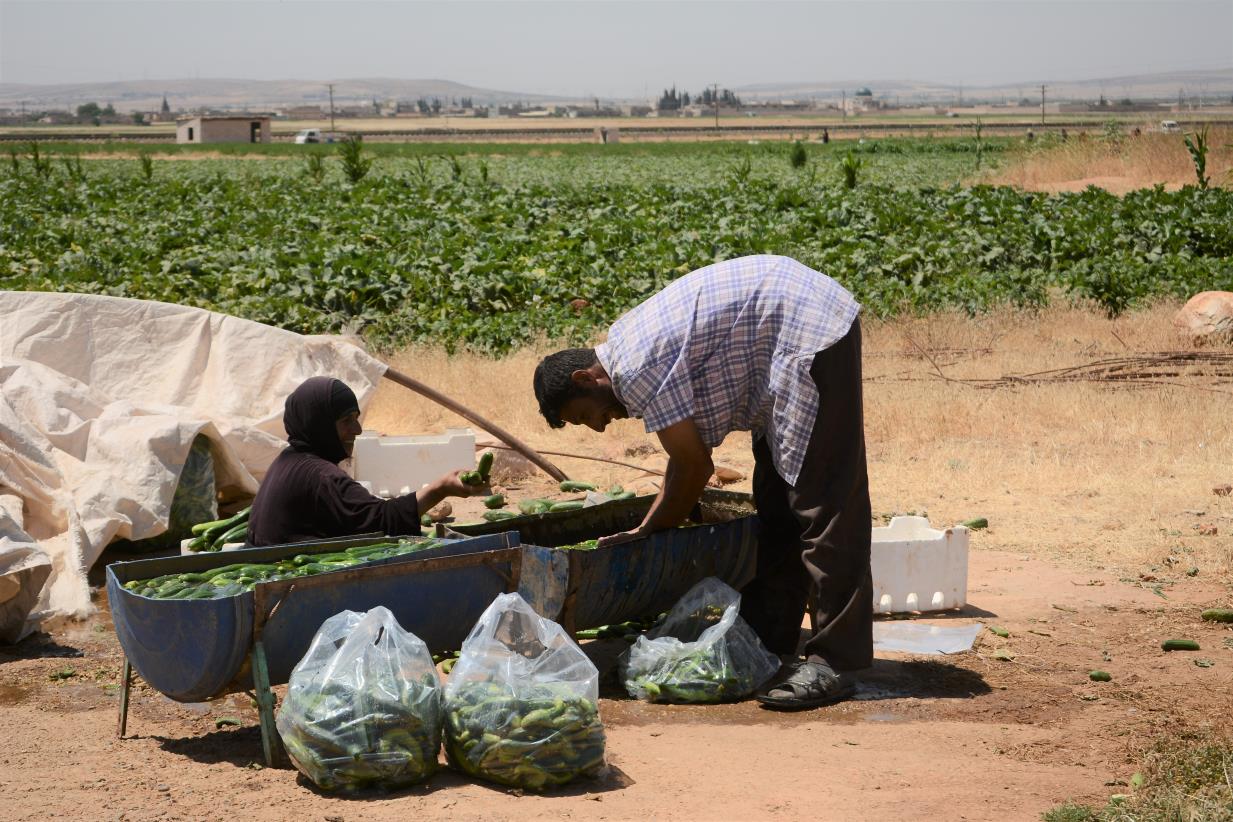FAO and Japan Improve Technology Use in Syria by Enhancing Experts’ Capabilities

©FAOSY
Damascus 17 November 2019: Back in March 2018, the Food and Agriculture Organization of the United Nations (FAO) announced its first wheat and barley production assessment in Syria using advanced information and communication technologies, based on remote sensing, which was carried out with FAO, by the General Organization for Remote Sensing (GORS).
This innovative partnership between FAO, GORS and the two line ministries - of Agriculture, and Water Resources - has continued to produce outstanding results. Recently - on 14th November 2019 - FAO sponsored a workshop organized by the General Organization for Remote Sensing (GORS) and the Natural Agricultural Policy Center (NAPC) on the use of similar remote sensing technologies in irrigation, based on two case studies of the impact of FAO’s irrigation rehabilitation projects on agricultural production in Homs and Aleppo Governorates.
The analysis took “before” and “after” images of land use, reflecting the improvement of crop production after rehabilitating irrigation facilities in the two governorates. The use of remote sensing technology across different spectral ranges, allowed the calculation of different indices, capturing different aspects of water use efficiency in producing biomass, and the workshop presented a series of compelling posters highlighting the usefulness of the tools.
Mike Robson, FAO Representative in the Syrian Arab Republic, stated that remote sensing technology is important for Syria “The technology allows the stakeholders involved in the agriculture sector to draw conclusions about the whole farming system, above and beyond talking to individual farmers; it also enables to access areas which would be difficult, or expensive to visit,”.
About 150 young Syrian technicians and experts have so far received intensive training on FAO’s advanced methodology and tools for assessing the impact of irrigation projects on crops’ production, besides data analysis, ArcGIS and ERDAS imagine software, determination of crops area and production through the NDVI, NDWI, GBWP and NBWP images and other topics related to technology and innovation.
“The challenge now is to use these approaches to support ‘on the ground’ decision making in irrigation management, in crop selection or even the assessment of plant health across an area. When this information helps better decision making at a field level, then farmers will really begin to benefit,” added Robson.
The training sessions conducted by FAO, with the generous support of the Government of Japan under “Training for All” project, meet the UN Sustainable Development Goal (SDG 9) - Build resilient infrastructure, promote inclusive and sustainable industrialization and foster innovation – as FAO promotes for sustainable development in rural communities through investments in innovation and technologies.
